Comprehensive Report: Building Systems and Structural Analysis
VerifiedAdded on 2020/04/15

OTEN NUMBER
COMPETENCY NAME AND NUMBER
ASSESSMENT NUMBER
Paraphrase This Document

Footing System:.........................................................................................................................1
Structural Systems:.....................................................................................................................3
Flooring System:........................................................................................................................6
Wall Systems:.............................................................................................................................8
Services:...................................................................................................................................10
Roof System:............................................................................................................................11
Bibliography:............................................................................................................................15
ii

Sittingbourne
1 of 13
⊘ This is a preview!⊘
Do you want full access?
Subscribe today to unlock all pages.

Trusted by 1+ million students worldwide
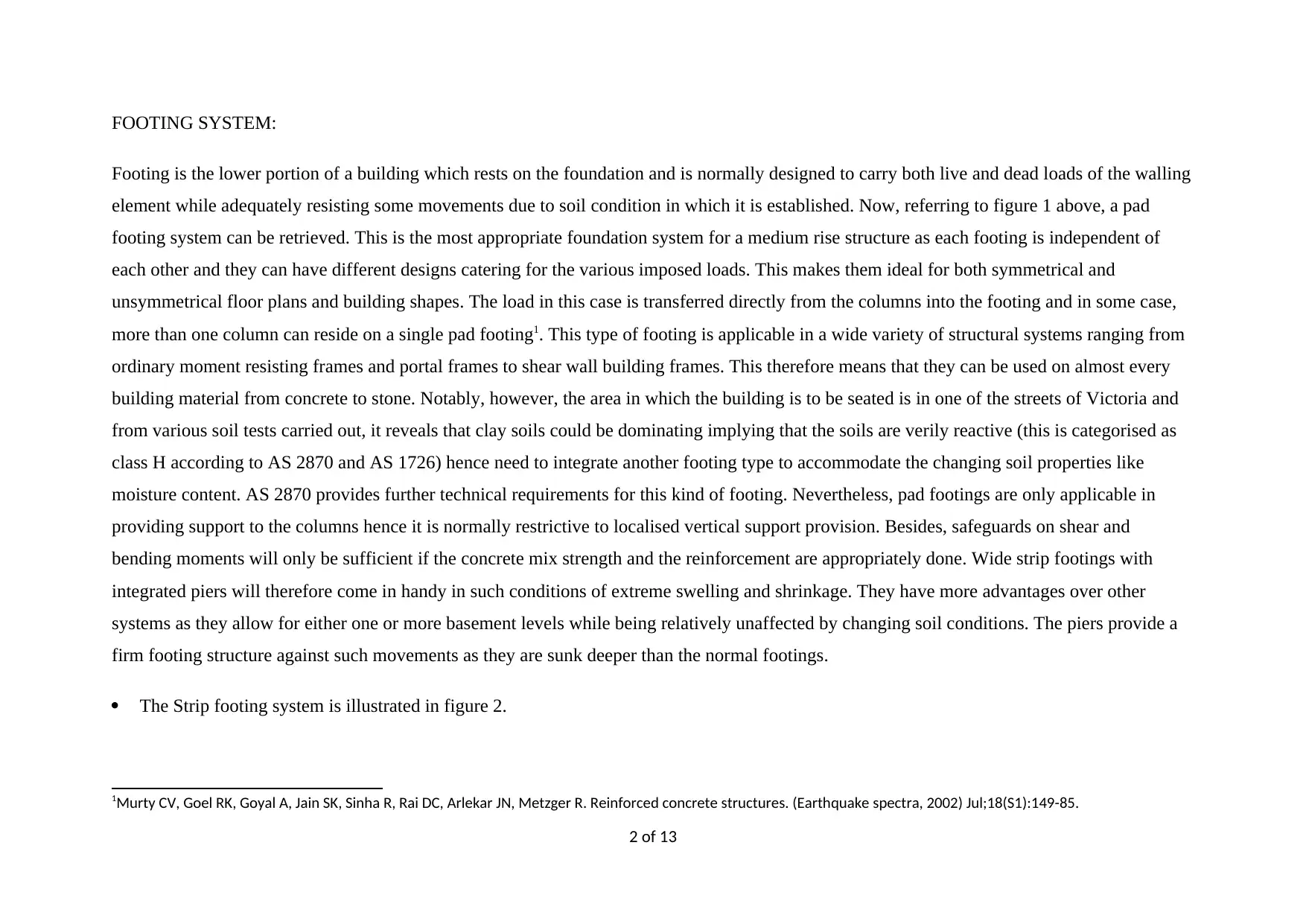
Footing is the lower portion of a building which rests on the foundation and is normally designed to carry both live and dead loads of the walling
element while adequately resisting some movements due to soil condition in which it is established. Now, referring to figure 1 above, a pad
footing system can be retrieved. This is the most appropriate foundation system for a medium rise structure as each footing is independent of
each other and they can have different designs catering for the various imposed loads. This makes them ideal for both symmetrical and
unsymmetrical floor plans and building shapes. The load in this case is transferred directly from the columns into the footing and in some case,
more than one column can reside on a single pad footing1. This type of footing is applicable in a wide variety of structural systems ranging from
ordinary moment resisting frames and portal frames to shear wall building frames. This therefore means that they can be used on almost every
building material from concrete to stone. Notably, however, the area in which the building is to be seated is in one of the streets of Victoria and
from various soil tests carried out, it reveals that clay soils could be dominating implying that the soils are verily reactive (this is categorised as
class H according to AS 2870 and AS 1726) hence need to integrate another footing type to accommodate the changing soil properties like
moisture content. AS 2870 provides further technical requirements for this kind of footing. Nevertheless, pad footings are only applicable in
providing support to the columns hence it is normally restrictive to localised vertical support provision. Besides, safeguards on shear and
bending moments will only be sufficient if the concrete mix strength and the reinforcement are appropriately done. Wide strip footings with
integrated piers will therefore come in handy in such conditions of extreme swelling and shrinkage. They have more advantages over other
systems as they allow for either one or more basement levels while being relatively unaffected by changing soil conditions. The piers provide a
firm footing structure against such movements as they are sunk deeper than the normal footings.
The Strip footing system is illustrated in figure 2.
1Murty CV, Goel RK, Goyal A, Jain SK, Sinha R, Rai DC, Arlekar JN, Metzger R. Reinforced concrete structures. (Earthquake spectra, 2002) Jul;18(S1):149-85.
2 of 13
Paraphrase This Document

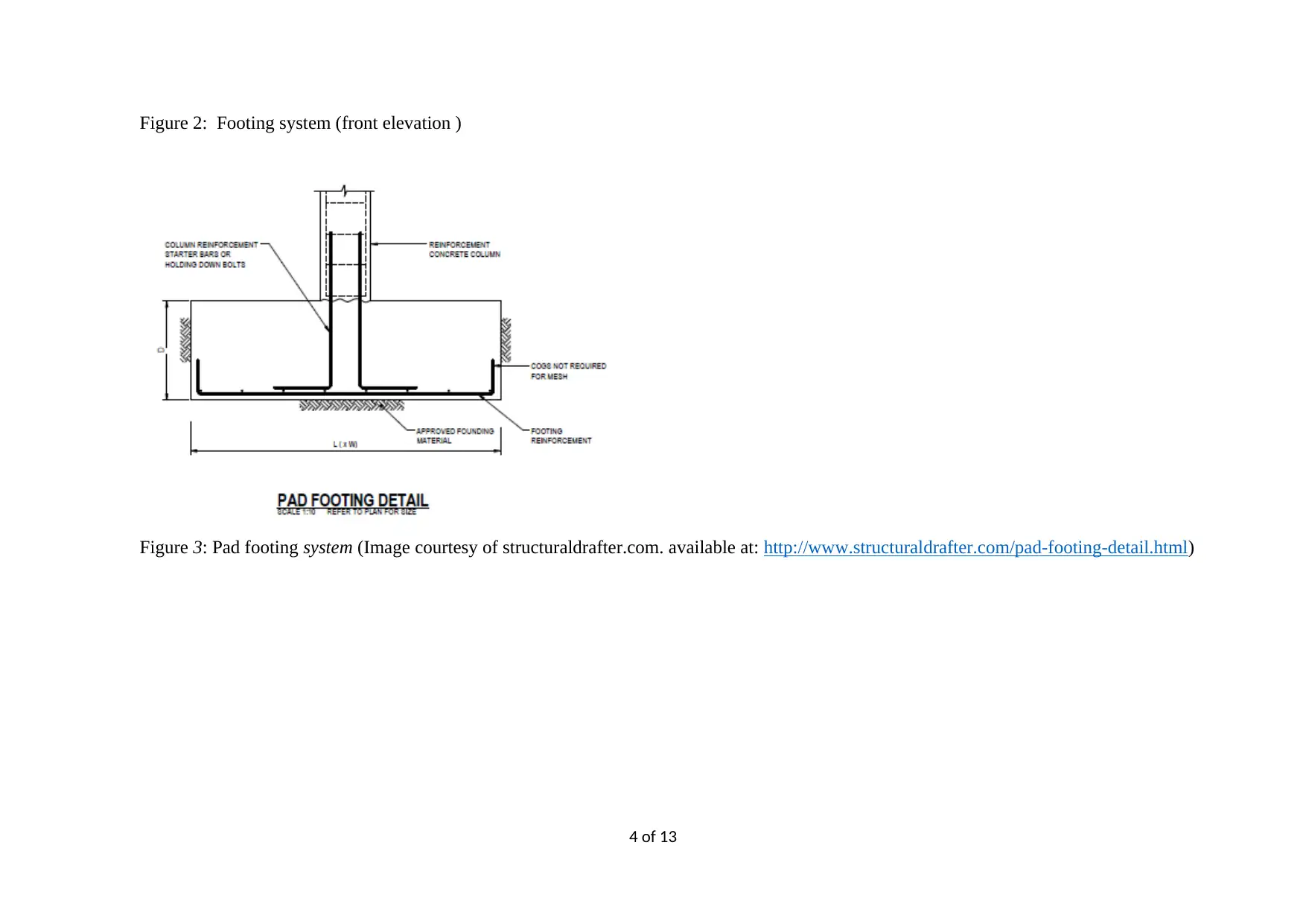
Figure 3: Pad footing system (Image courtesy of structuraldrafter.com. available at: http://www.structuraldrafter.com/pad-footing-detail.html)
4 of 13
⊘ This is a preview!⊘
Do you want full access?
Subscribe today to unlock all pages.

Trusted by 1+ million students worldwide
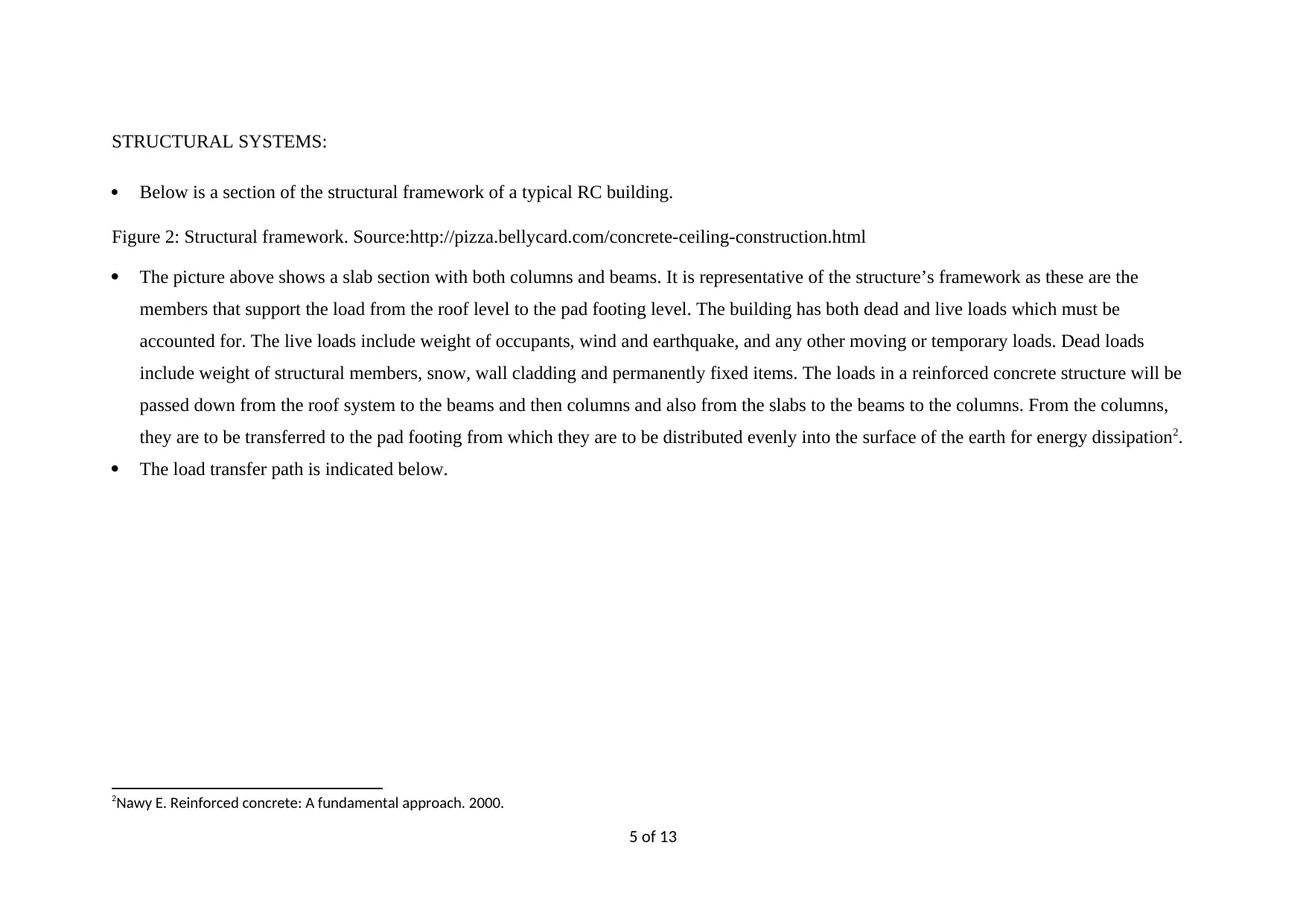
Below is a section of the structural framework of a typical RC building.
Figure 2: Structural framework. Source:http://pizza.bellycard.com/concrete-ceiling-construction.html
The picture above shows a slab section with both columns and beams. It is representative of the structure’s framework as these are the
members that support the load from the roof level to the pad footing level. The building has both dead and live loads which must be
accounted for. The live loads include weight of occupants, wind and earthquake, and any other moving or temporary loads. Dead loads
include weight of structural members, snow, wall cladding and permanently fixed items. The loads in a reinforced concrete structure will be
passed down from the roof system to the beams and then columns and also from the slabs to the beams to the columns. From the columns,
they are to be transferred to the pad footing from which they are to be distributed evenly into the surface of the earth for energy dissipation2.
The load transfer path is indicated below.
2Nawy E. Reinforced concrete: A fundamental approach. 2000.
5 of 13
Paraphrase This Document
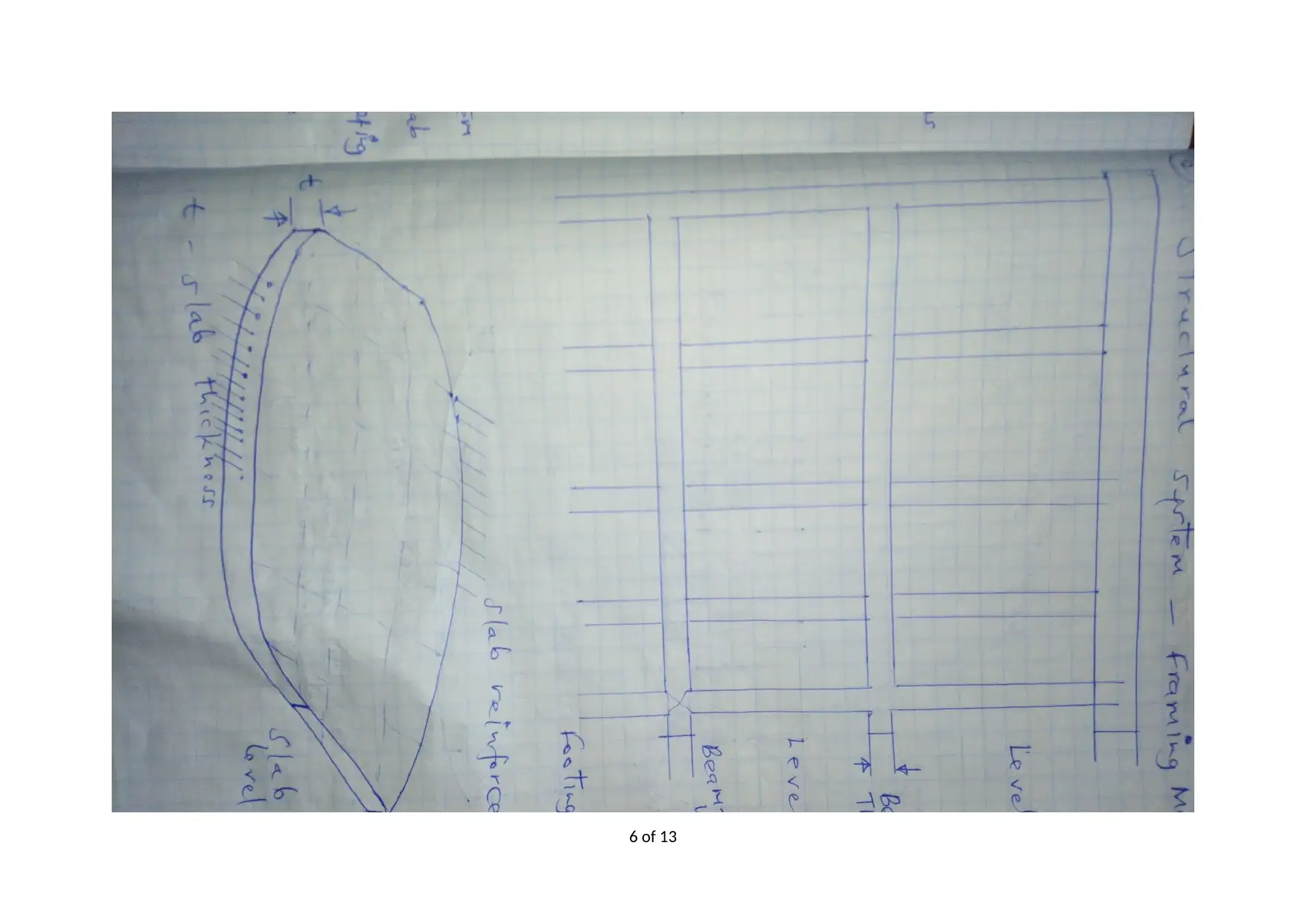
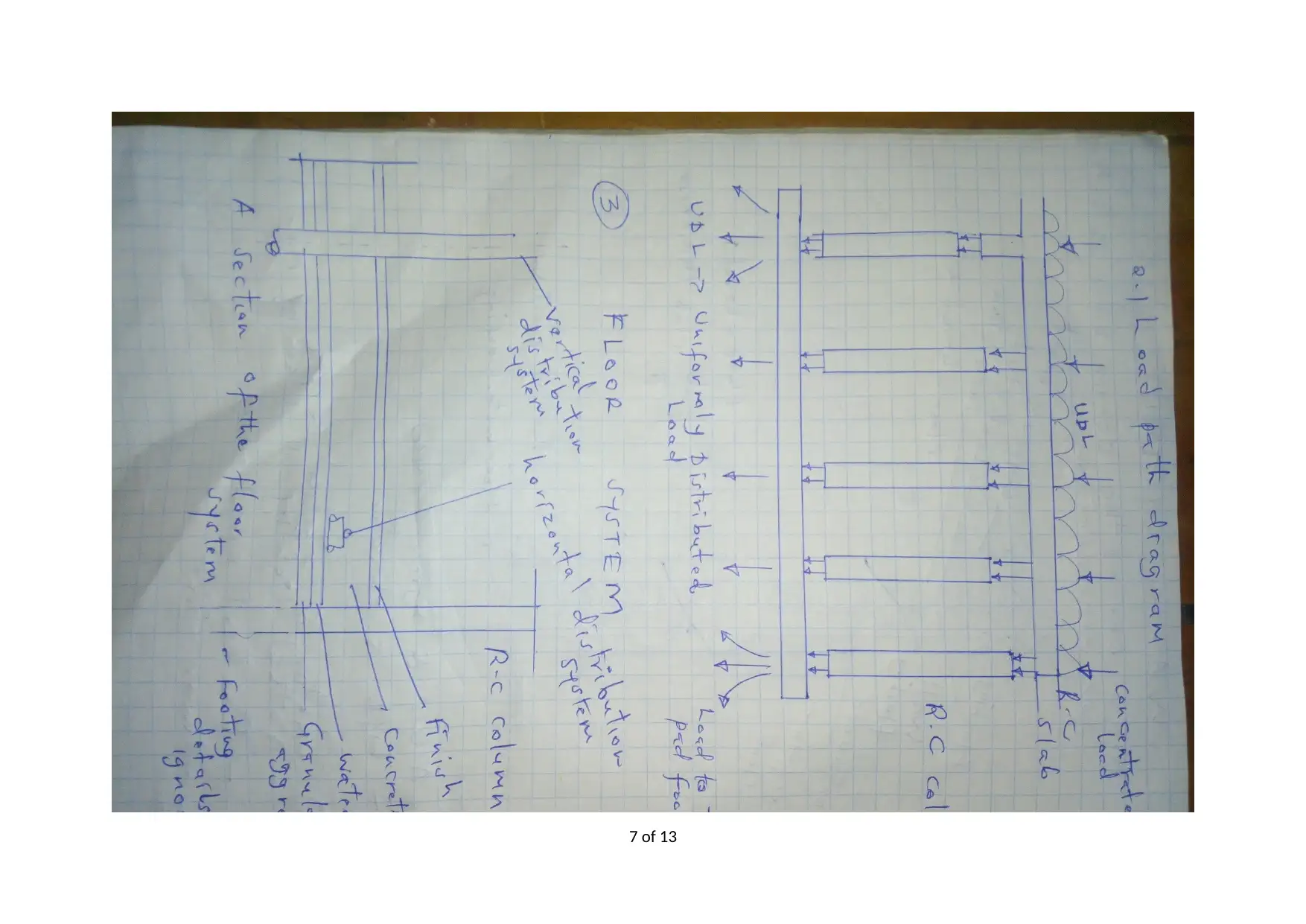
⊘ This is a preview!⊘
Do you want full access?
Subscribe today to unlock all pages.

Trusted by 1+ million students worldwide

8 of 13
Paraphrase This Document
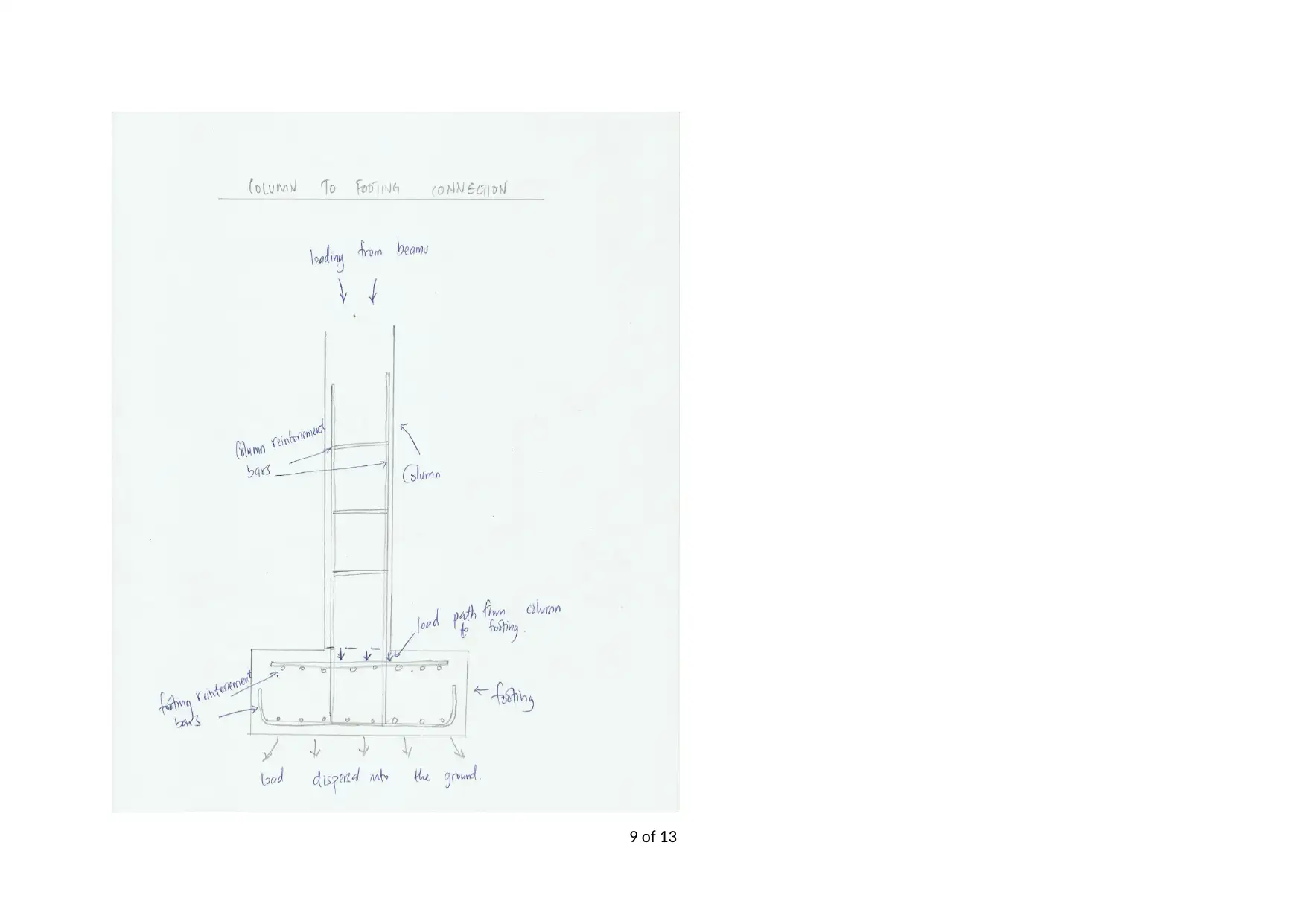

⊘ This is a preview!⊘
Do you want full access?
Subscribe today to unlock all pages.

Trusted by 1+ million students worldwide

The building has a concrete screed floor system making it generally a concrete floor. In the building in our case, the screed is applied on top
of the existing concrete slab and from there any other floor finishes can be applied as per the specifications of the occupants. In most cases
there is usually a series of ground beams on which the concrete slab rests and this floor slab is one of them. The concrete slab is reinforced
before concreting to make it stronger and it is then possible to carry loads imposed on the floor as per the design. The floor section is
indicated below.
The sequence of construction of this floor is:
i. Levelling the ground and blinding it.
ii. Setting up of slab formwork.
iii. Assemble the reinforcement bars.
iv. Batching the concrete onto the formwork and reinforcement to produce a pad footing otherwise known as column base.
v. Erect column formwork, reinforcement bars and concrete them.
vi. Cure slabs for 7 days.
vii. Erect beam formwork.
viii. Erect the beam reinforcement bars.
ix. Erect formwork for the slab
x. Assemble slab reinforcement bars and fix with beam reinforcement bars.
xi. Concrete the slab.
The slab under construction is indicated in figure 3 above. The appropriate bar size is between N16 and N20.
11 of 13
Paraphrase This Document

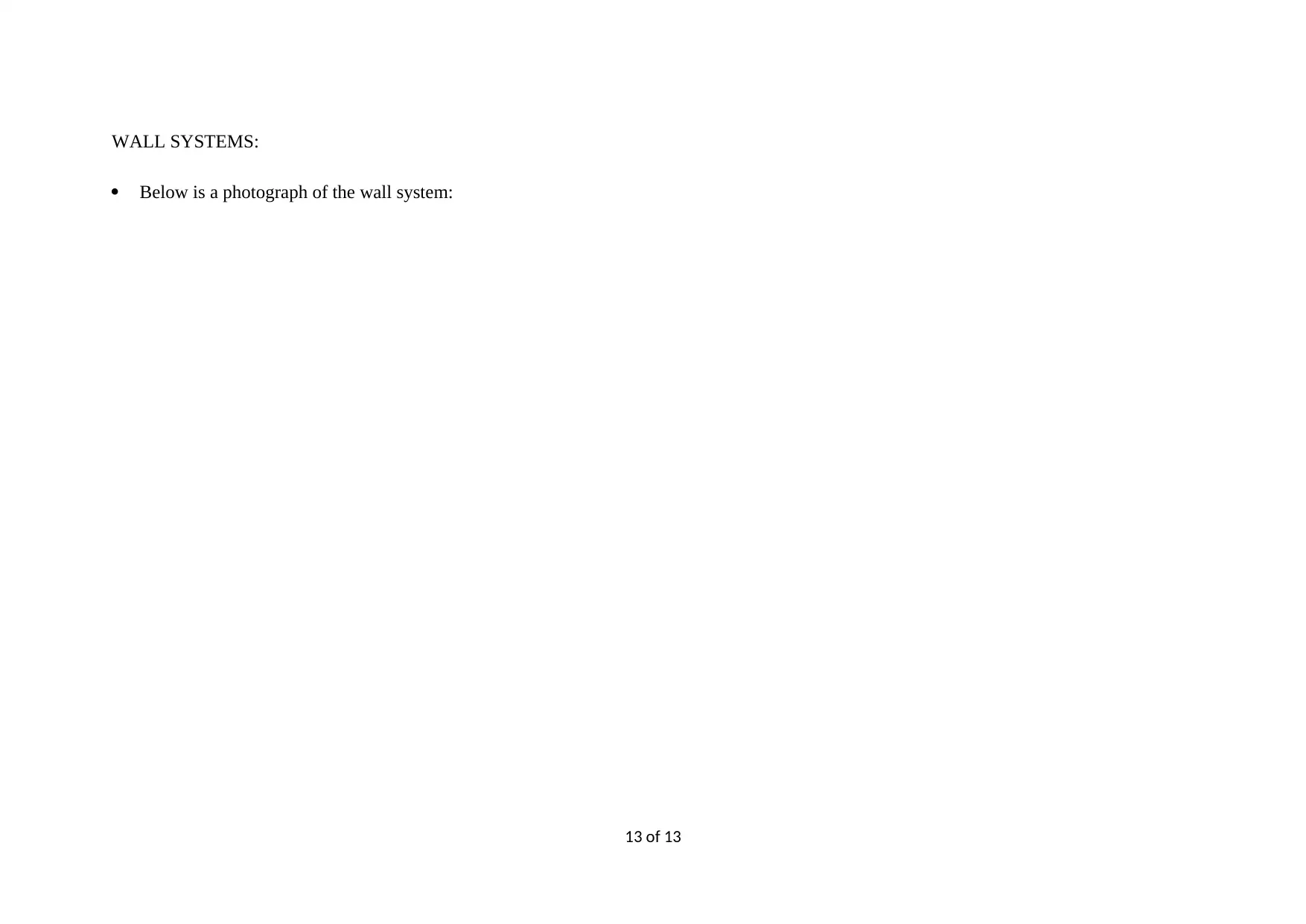
Below is a photograph of the wall system:
13 of 13
⊘ This is a preview!⊘
Do you want full access?
Subscribe today to unlock all pages.

Trusted by 1+ million students worldwide
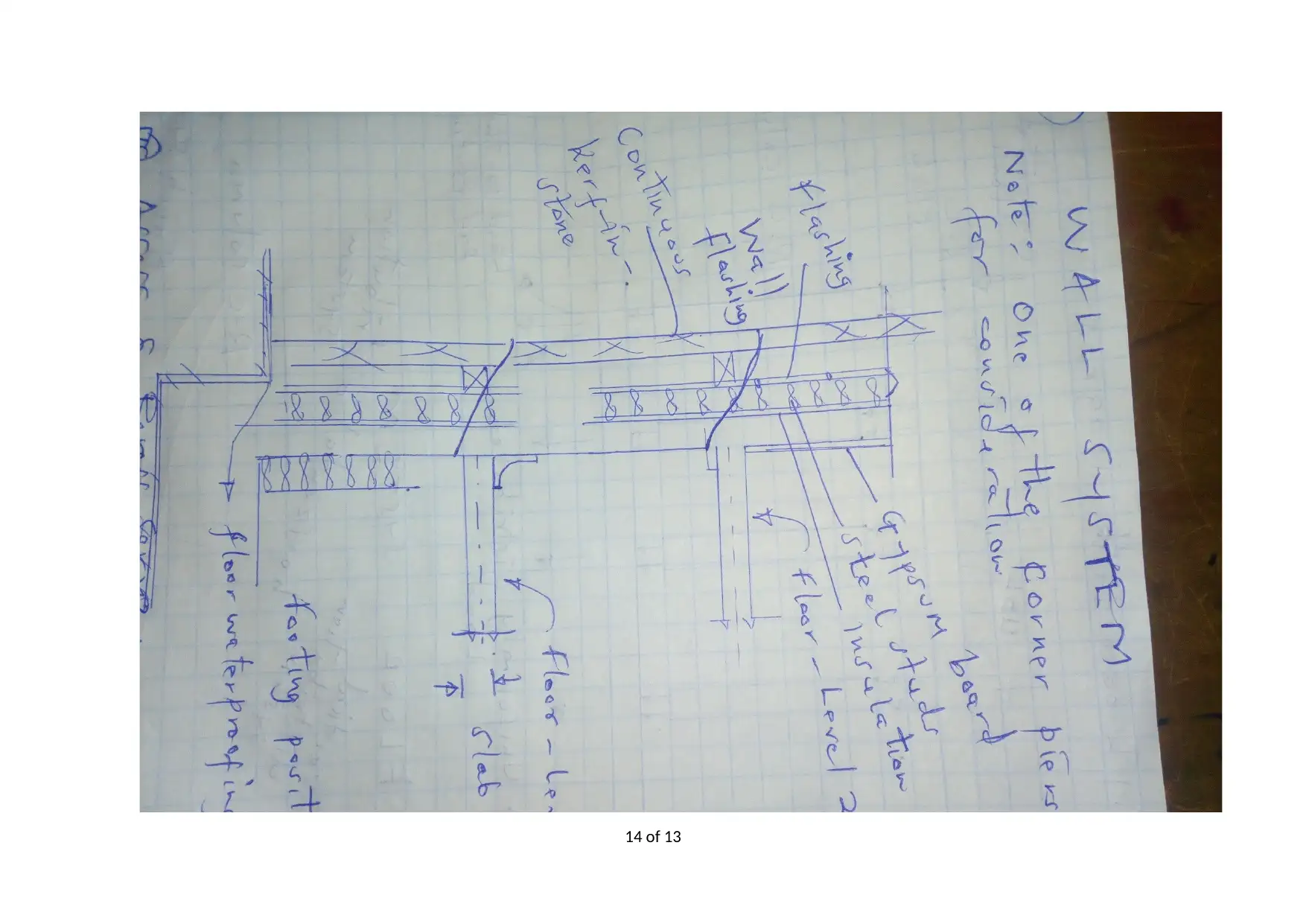
Paraphrase This Document

Setting out on the ground.
Prepare a masonry wall footing that is slightly bigger than the block (by at least 100mm on each side).
Apply about 10mm thick mortar layer after wetting the foundation.
Place a block on the mortar and check for alignment.
Continue on till the first course (layer of bricks) is done.
Repeat steps 3 to 5 for the subsequent courses of bricks.
Add a steel strip every three or four courses of bricks.
Plaster the brick wall faces.
15 of 13
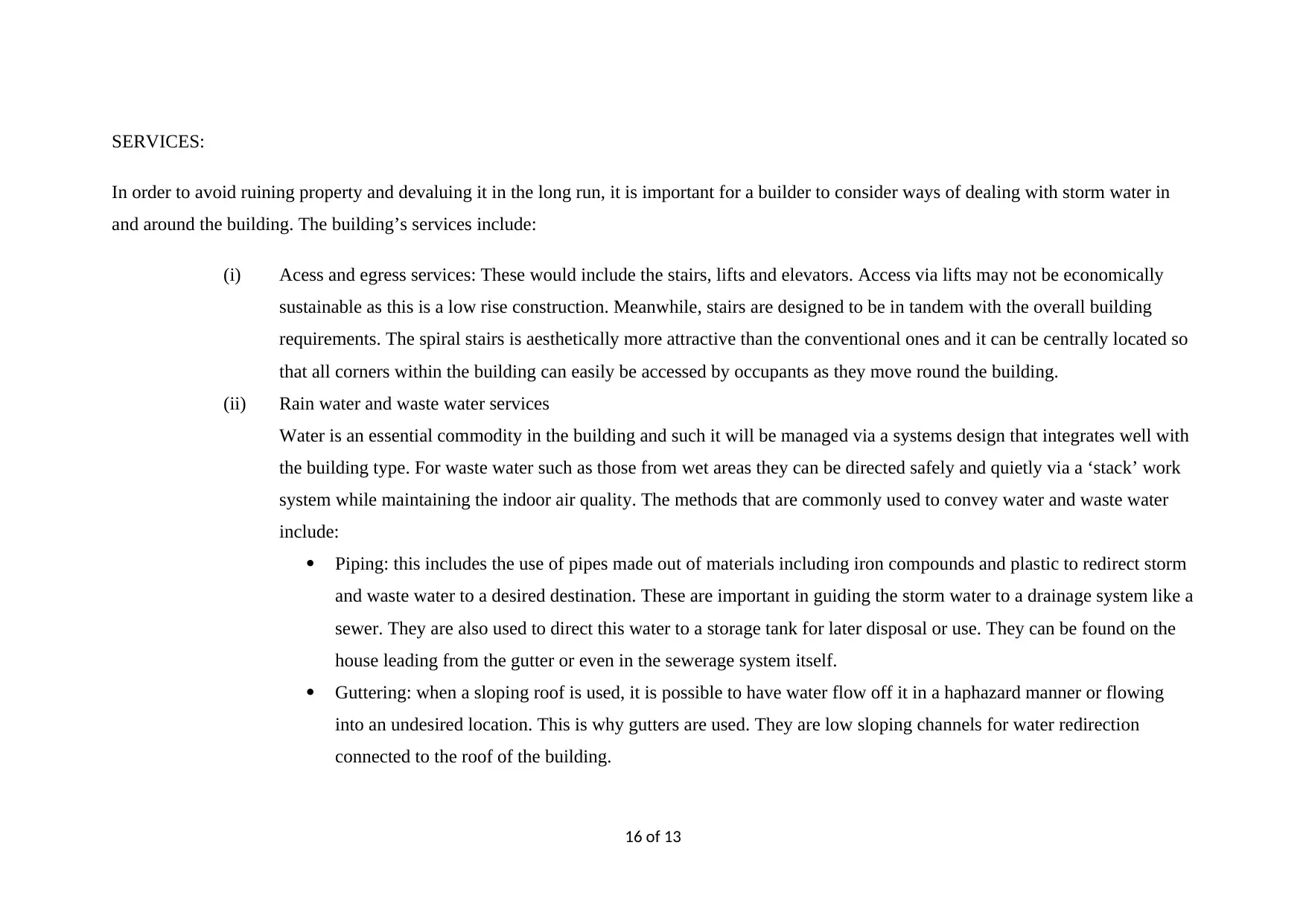
In order to avoid ruining property and devaluing it in the long run, it is important for a builder to consider ways of dealing with storm water in
and around the building. The building’s services include:
(i) Acess and egress services: These would include the stairs, lifts and elevators. Access via lifts may not be economically
sustainable as this is a low rise construction. Meanwhile, stairs are designed to be in tandem with the overall building
requirements. The spiral stairs is aesthetically more attractive than the conventional ones and it can be centrally located so
that all corners within the building can easily be accessed by occupants as they move round the building.
(ii) Rain water and waste water services
Water is an essential commodity in the building and such it will be managed via a systems design that integrates well with
the building type. For waste water such as those from wet areas they can be directed safely and quietly via a ‘stack’ work
system while maintaining the indoor air quality. The methods that are commonly used to convey water and waste water
include:
Piping: this includes the use of pipes made out of materials including iron compounds and plastic to redirect storm
and waste water to a desired destination. These are important in guiding the storm water to a drainage system like a
sewer. They are also used to direct this water to a storage tank for later disposal or use. They can be found on the
house leading from the gutter or even in the sewerage system itself.
Guttering: when a sloping roof is used, it is possible to have water flow off it in a haphazard manner or flowing
into an undesired location. This is why gutters are used. They are low sloping channels for water redirection
connected to the roof of the building.
16 of 13
⊘ This is a preview!⊘
Do you want full access?
Subscribe today to unlock all pages.

Trusted by 1+ million students worldwide
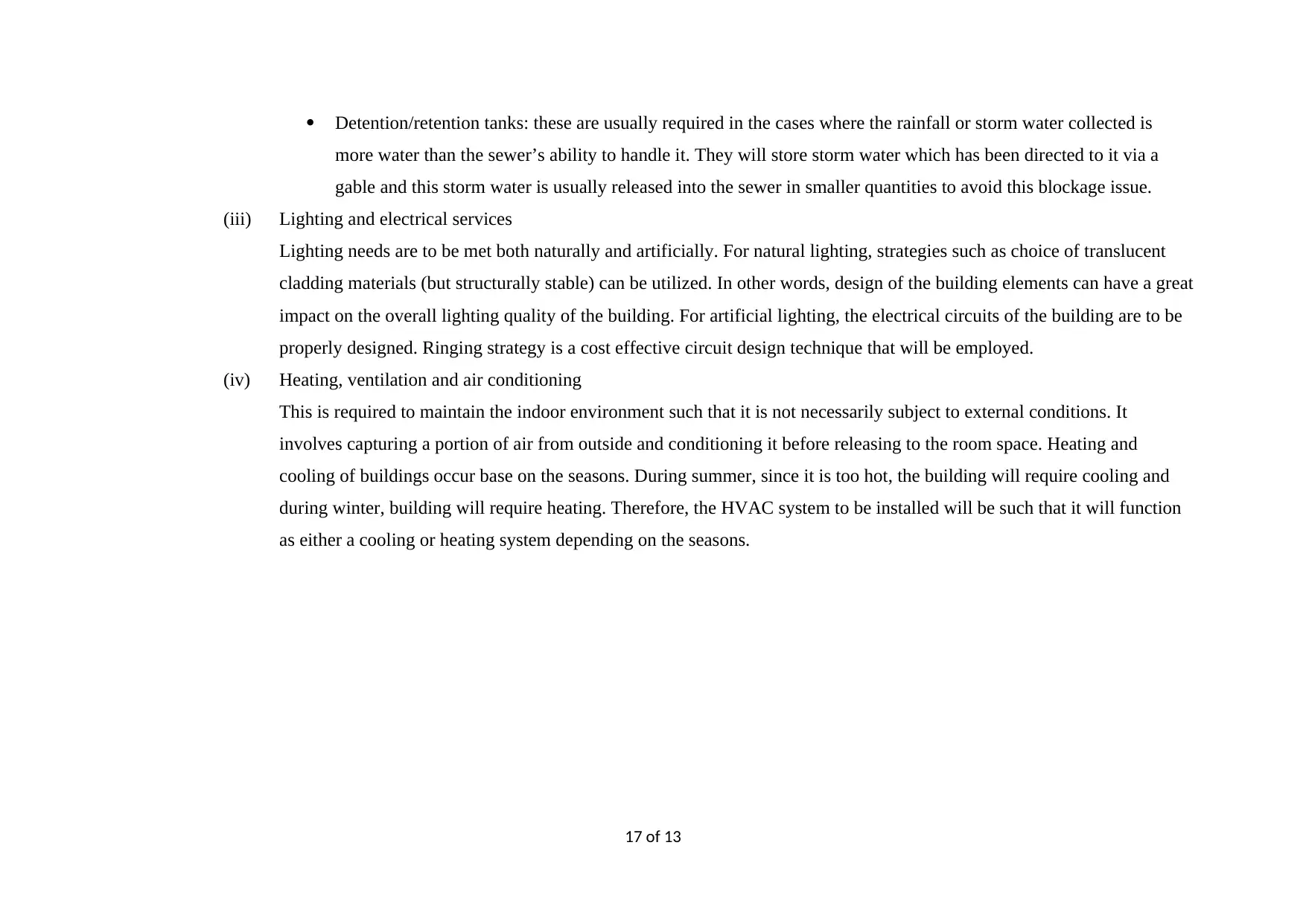
more water than the sewer’s ability to handle it. They will store storm water which has been directed to it via a
gable and this storm water is usually released into the sewer in smaller quantities to avoid this blockage issue.
(iii) Lighting and electrical services
Lighting needs are to be met both naturally and artificially. For natural lighting, strategies such as choice of translucent
cladding materials (but structurally stable) can be utilized. In other words, design of the building elements can have a great
impact on the overall lighting quality of the building. For artificial lighting, the electrical circuits of the building are to be
properly designed. Ringing strategy is a cost effective circuit design technique that will be employed.
(iv) Heating, ventilation and air conditioning
This is required to maintain the indoor environment such that it is not necessarily subject to external conditions. It
involves capturing a portion of air from outside and conditioning it before releasing to the room space. Heating and
cooling of buildings occur base on the seasons. During summer, since it is too hot, the building will require cooling and
during winter, building will require heating. Therefore, the HVAC system to be installed will be such that it will function
as either a cooling or heating system depending on the seasons.
17 of 13
Paraphrase This Document
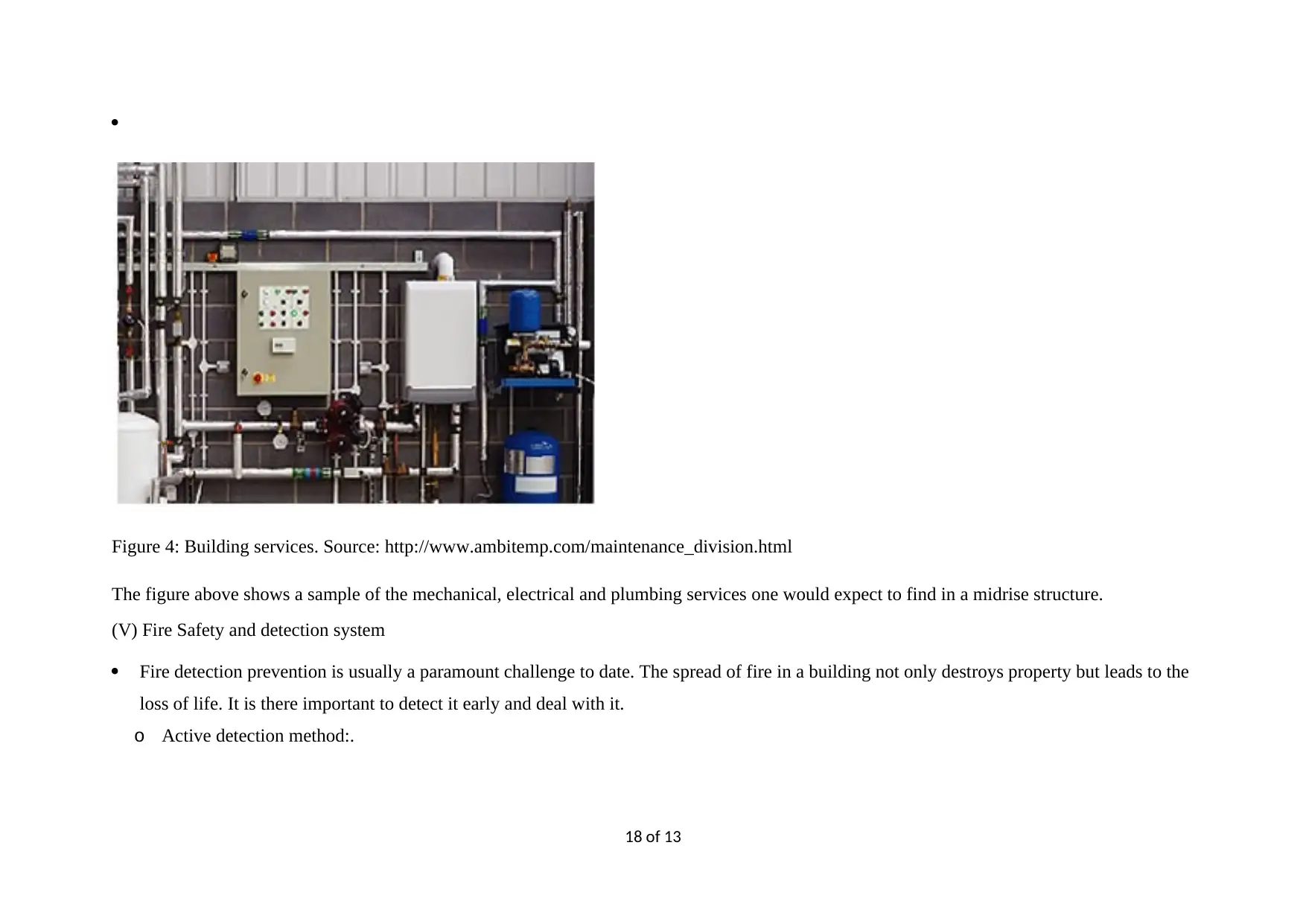
Figure 4: Building services. Source: http://www.ambitemp.com/maintenance_division.html
The figure above shows a sample of the mechanical, electrical and plumbing services one would expect to find in a midrise structure.
(V) Fire Safety and detection system
Fire detection prevention is usually a paramount challenge to date. The spread of fire in a building not only destroys property but leads to the
loss of life. It is there important to detect it early and deal with it.
o Active detection method:.
18 of 13
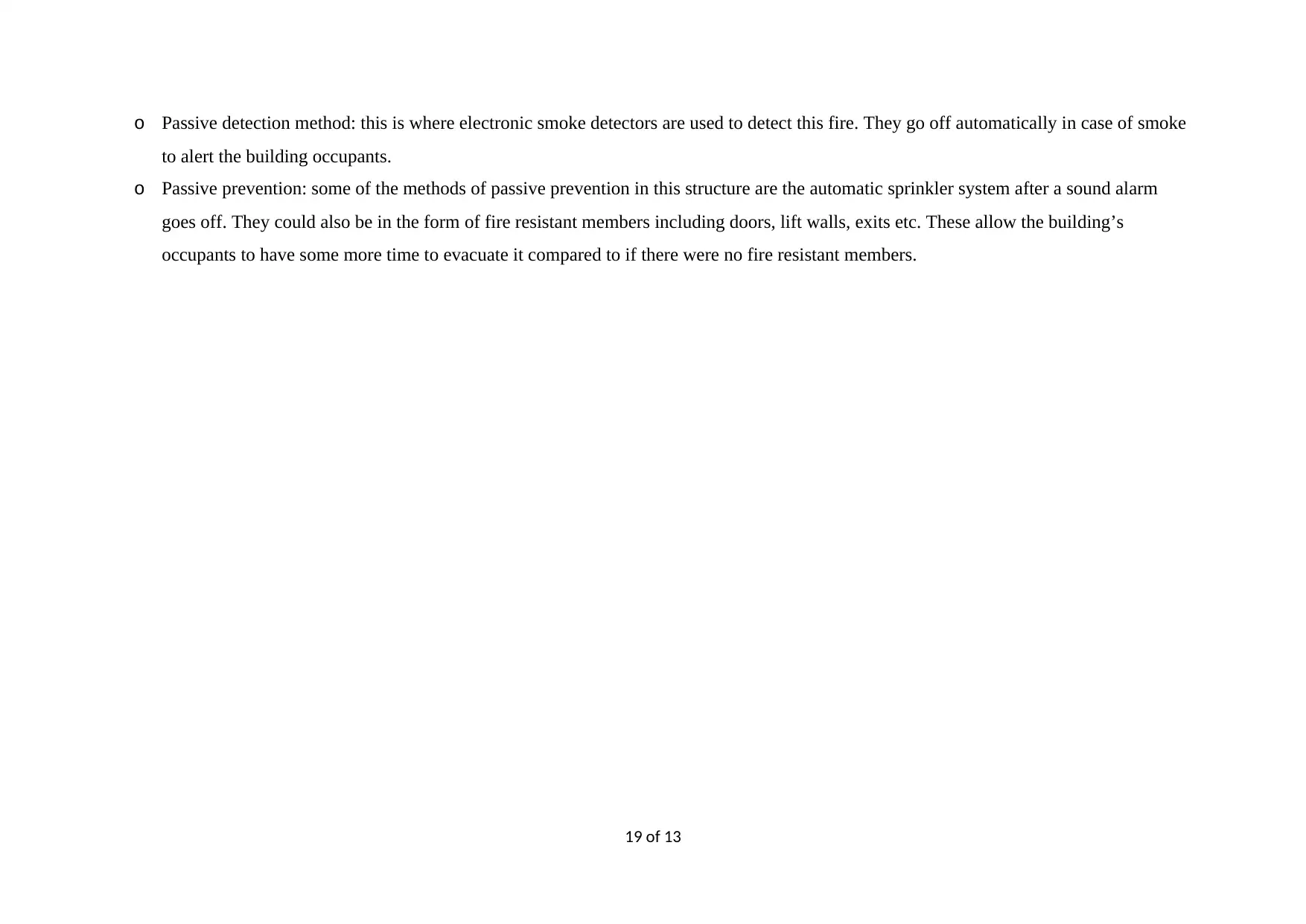
to alert the building occupants.
o Passive prevention: some of the methods of passive prevention in this structure are the automatic sprinkler system after a sound alarm
goes off. They could also be in the form of fire resistant members including doors, lift walls, exits etc. These allow the building’s
occupants to have some more time to evacuate it compared to if there were no fire resistant members.
19 of 13
⊘ This is a preview!⊘
Do you want full access?
Subscribe today to unlock all pages.

Trusted by 1+ million students worldwide

20 of 13
Paraphrase This Document
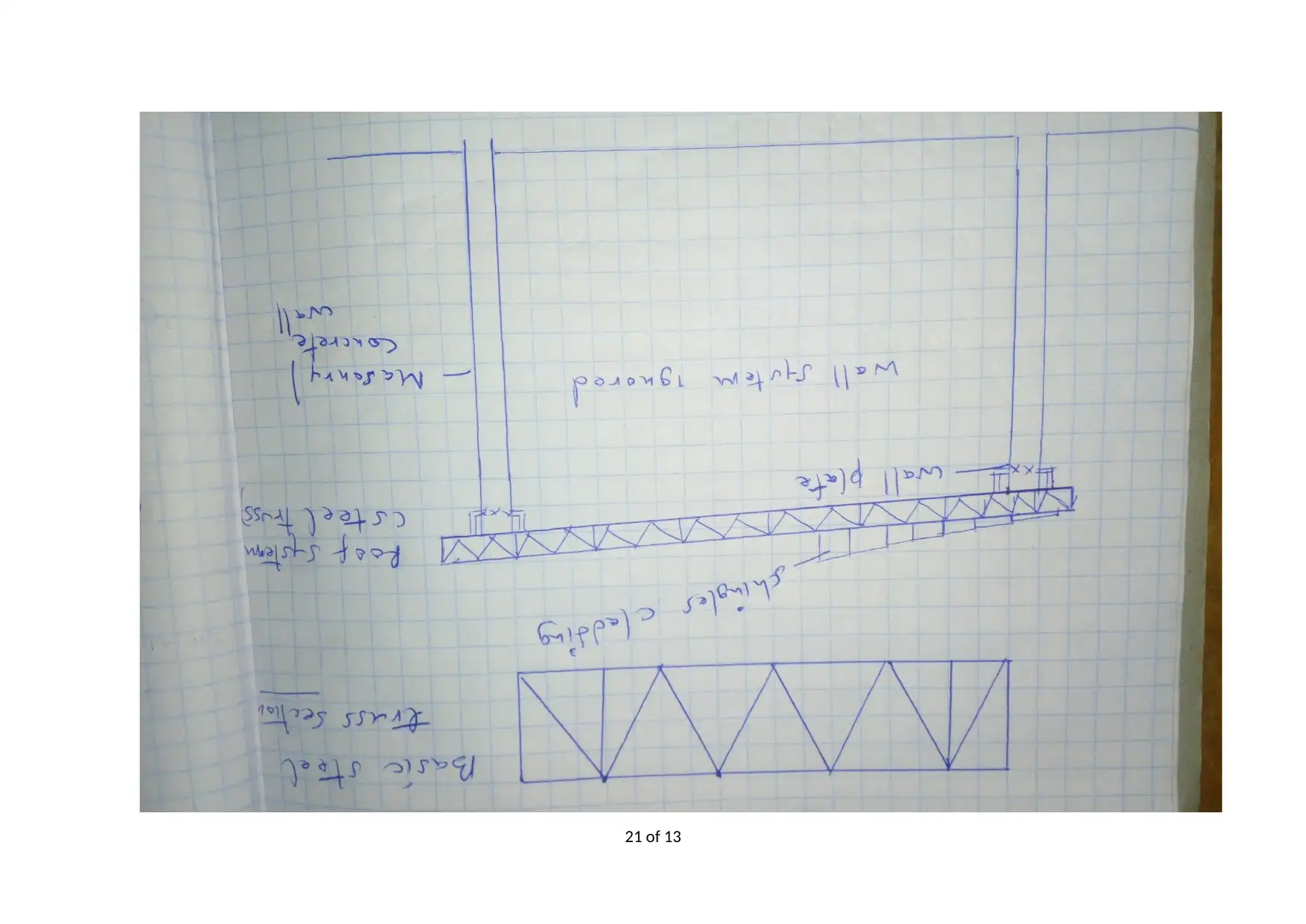
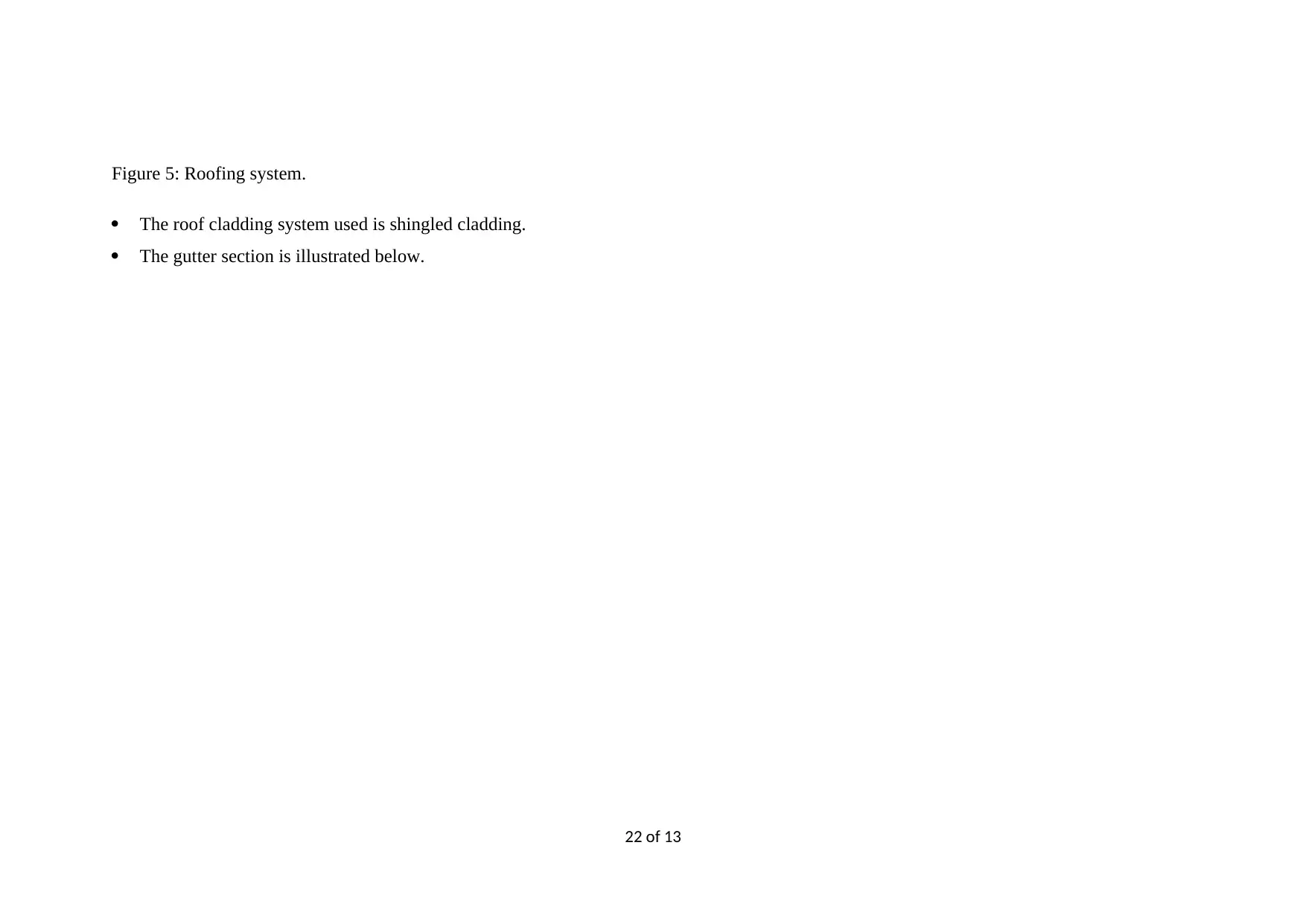
The roof cladding system used is shingled cladding.
The gutter section is illustrated below.
22 of 13
⊘ This is a preview!⊘
Do you want full access?
Subscribe today to unlock all pages.

Trusted by 1+ million students worldwide
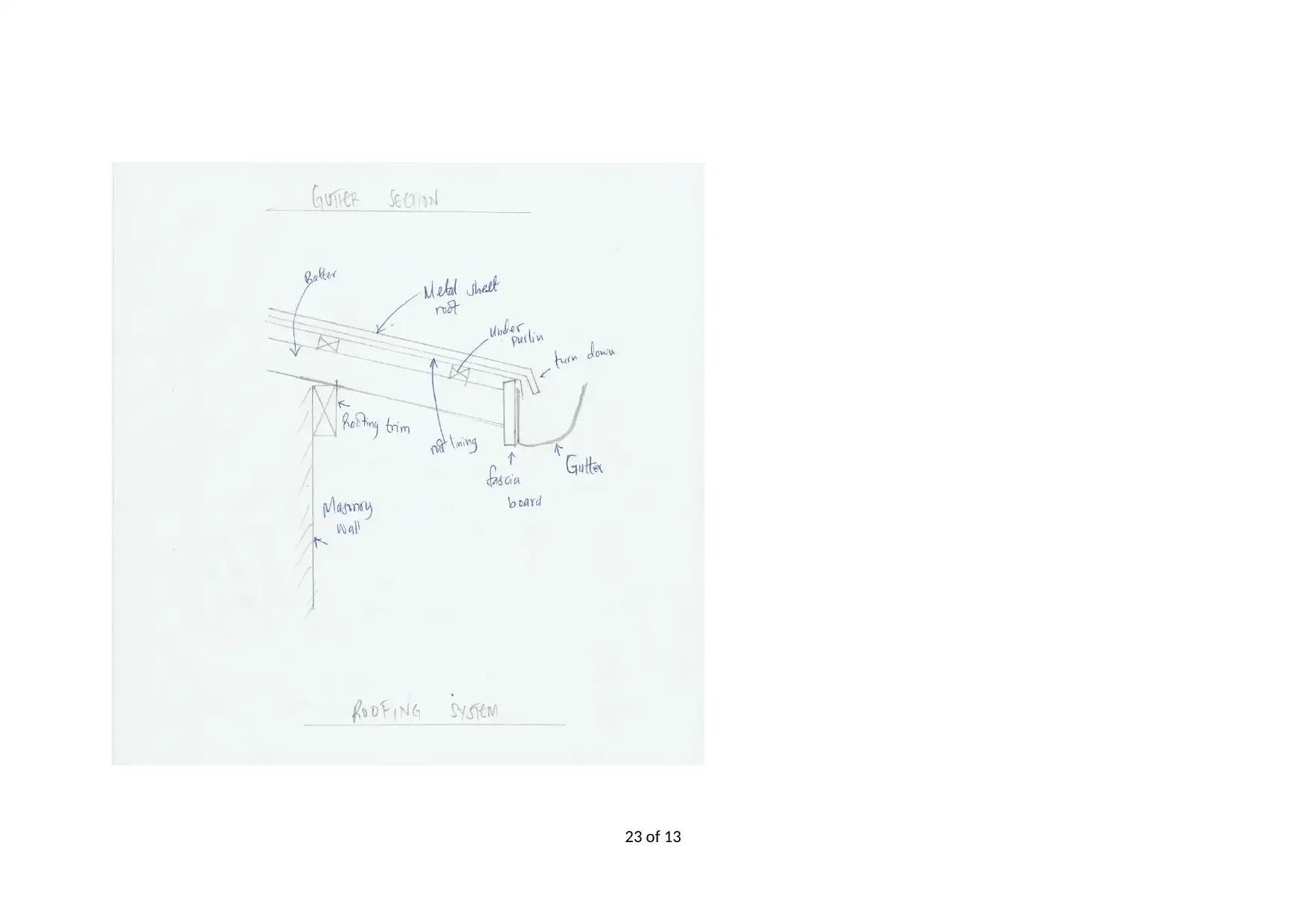
Paraphrase This Document

24 of 13

1Murty, C. V. R., et al. "Reinforced concrete structures." Earthquake spectra 18.S1 (2002): 149-185.
2Nawy, Edward. Reinforced concrete: A fundamental approach. (2000).
25 of 13
⊘ This is a preview!⊘
Do you want full access?
Subscribe today to unlock all pages.

Trusted by 1+ million students worldwide
Related Documents
Your All-in-One AI-Powered Toolkit for Academic Success.
+13062052269
info@desklib.com
Available 24*7 on WhatsApp / Email
![[object Object]](/_next/static/media/star-bottom.7253800d.svg)
© 2024 | Zucol Services PVT LTD | All rights reserved.





